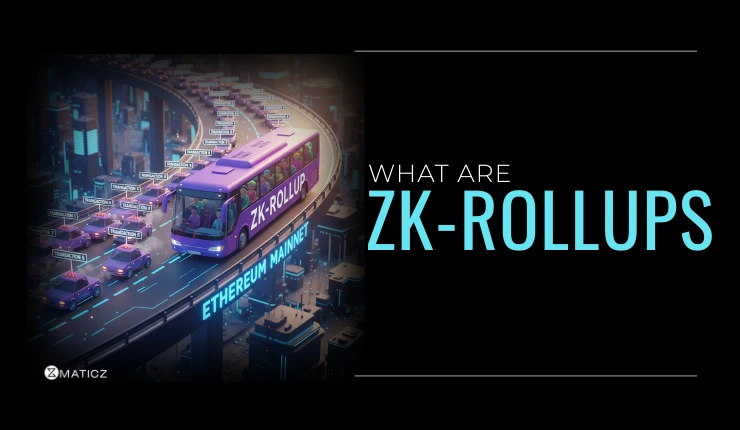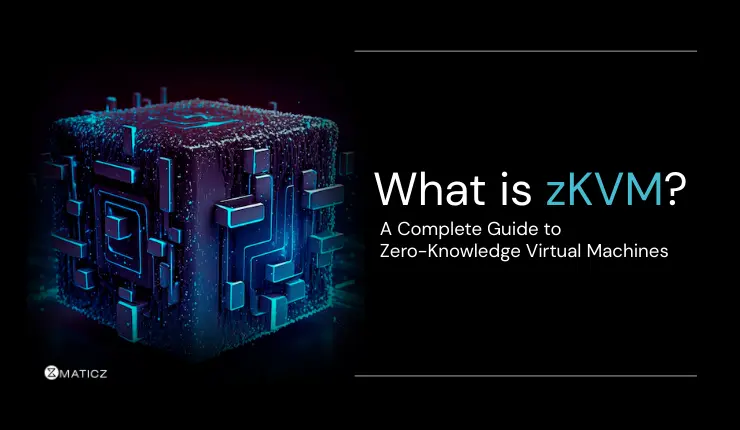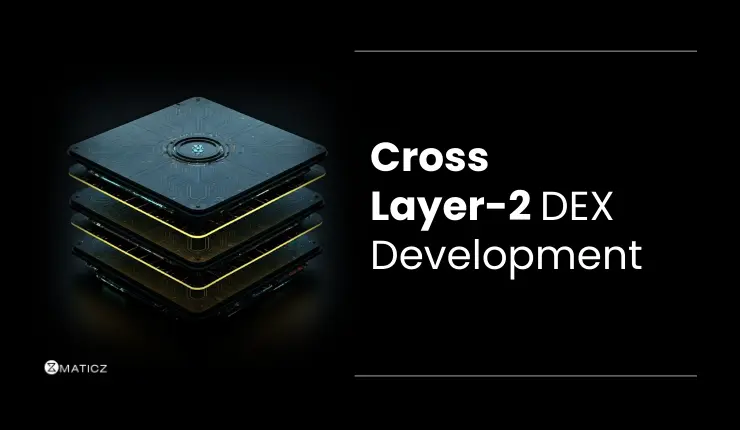Share Posts

Blockchain Development Guide: Build a Blockchain From Scratch
62
3885
103
Blockchain technology is at the forefront of innovation making a massive influence on the industries and redefining the traditional methods around us. At present, blockchain technology is in the early phase that involves the creation and maintenance of decentralized, distributed systems. It helps us to tackle the problem with ease to improve its acceptance to the next level and also increase its deployment in almost every aspect.
In the early days, it was the platform that was used for supporting Bitcoin, blockchain exhibiting the quality of versatility and security started to impress many businesses to notice its ability and began to introduce it into their relevant field.
What is Blockchain Development?
Blockchain has been one of the major tech stories in the past few years. It is the type of database used to store data in the form of blocks linked together via cryptography which differs from the traditional database. This makes information easy for the computer to recognize the required data. This secured database is shared across a network of participants where the data is accessed by everyone at the same time.
Blockchain Development is the process of building a shared, immutable, distributed ledger system that securely stores the transactions and tracks the assets. Blockchain operates on a peer-to-peer network where no single entity has control, thus this decentralization enhances security and eliminates the need for intermediaries.
Prerequisites to Develop a Blockchain Network
By having these prerequisites, it is easy to navigate the complexities of blockchain technology.
Network: As it operates on peer-to-peer networks, it is vital to understand the concept to ensure proper communication between nodes.
Cryptograph: It is a method of securing the data from tampering ensuring the integration.
Data Structure and Algorithms: It helps to strengthen your understanding of the problem wider scale and optimize the solution with the available constraints.
Decentralized Systems: Blockchain relies on the principle of decentralization where the authority is not controlled by a single entity.
Programming Language: It is essential to have some knowledge of coding to develop a blockchain network
Key Concepts to Consider to Make a Blockchain
It is important to learn about some basic concepts to program your blockchain
Cryptographic Hash and Digital Signature: Hashing is a program used to convert data into equivalent hexadecimal form and digi sign is the cryptographic output to check the authenticity.
Immutable Ledger: Data once entered cannot be altered.
P2P Network: It allows the user to make transactions between the nodes with the central server.
Consensus Algorithm: It is an algorithm that brings agreement on the single data from all nodes of the blockchain.
Block Validation: It is a process where each node performs a series of tests to validate the transaction.
How to Build a Blockchain?
Building the Blockchain is time-consuming, and highly dependent on your distinct business requirements. Some of the key steps involved in developing a blockchain are:
Find Your Uses Cases
It is important to understand the concept of blockchain technology because this will change the way transactions are done in the upcoming years. So before starting to develop a blockchain, it is vital to find the use case that makes business sense. Things that blockchain can perform well are:
Data Authentication and Verification
Data, which includes digital signatures, immutable storage, and encryption, can be stored in any format in the blockchain. Blockchain can also build private-public key pairs used for developing and verifying digital signs.
Smart Asset Management
Smart assets that include issuance, payment, exchange, escrow, and retirement, are the tokenized form of a real-world asset like gold, or silver.
Smart Contracts
They digitally execute the agreement through self-executing code on the blockchain, thus mitigating the losses of risks with the secured and transparent mechanism.
Draft Your Business Requirements
After finding your business needs, draft a detailed plan to define the technology requirements for your business. This information will help to sketch the basic product map to make sure that you meet your deadlines and understand the resource needs.
Identify a Suitable Consensus Mechanism
A consensus mechanism is a program that helps to attain the distributed agreement on the current state of the ledger. Primarily, Proof of Work(PoW) is used as a consensus mechanism in the blockchain technology that powers the bitcoin.
But today there are multiple groups of consensus mechanisms available, so choose the apt algorithm according to your business needs. Some of the available mechanisms are:
1. Proof of Stake (PoS)
2. Delegated Proof of Stake (DPoS)
3. Proof of Elapsed Time (PoET)
4. Proof of Importance (PoI)
5. Proof of Capacity (PoC)
6. Proof of Weight (PoWeight)
7. Proof of Activity (PoA)
8. Practical Byzantine Fault Tolerance (PBFT)
9. Simplified Byzantine Fault Tolerance (SBFT)
10. Directed Acyclic Graphs (DAG)
Tangle & more.
Choose The Suitable Blockchain Platform
Today there are many distributed ledger systems available, most of which are free and open-source. Depending on the consensus mechanism chosen from the above step, precisely choose the suitable platform that fits your business needs. Some of the platforms available are:
BigChainDB
Chain Core
Corda
Credits
Domus Tower Blockchain
Elements Blockchain Platform
Eris:db
Ethereum
HydraChain
Hyperledger Fabric
Hyperledger Iroha
Hyperledger Sawtooth Lake
Multichain
Openchain
Quorum
Stellar
Symbiont Assembly & More
Design The Nodes
Determine whether your blockchain network is constructed as a permission or permissionless network.
The permissionless network is where anyone can join and begin to verify which includes Bitcoin and Ethereum networks. The permission network is where the network owner approves the members who can join and only a few have access to verify the blocks.
It can also be private, such as the contract-based management system in a healthcare firm, public like the Bitcoin platform, or hybrid such as a group of banks functioning on the shared KYC.
Additionally, to determine the hardware configuration issues like processor, memory, or disc space, determine whether the node will run on the cloud, on-premises, or both.
Plan Blockchain Configuration
For most blockchain platforms, it's essential to strategize for various configuration elements. Some elements can be modified during runtime while some cannot, so this is a crucial step to consider. Some of the elements are the following:
1. Permissions
2. Asset issuance
3. Asset re-issuance
4. Atomic exchanges
5. Key management
6. Multi-signatures
7. Native assets
8. Address formats
9. Key formats
10. Block signatures
Build the APIs
Most of the immutable blockchain platforms come with pre-build APIs whereas some don’t. So per your requirements, you may need the following to build an API:
1. Production of key pairs and addresses
2. Performance of audit-related functions
3. Data authentication (through digital signatures and hashes)
4. Data storage and retrieval
5. Smart-asset lifecycle management
6. Smart contracts
Testing and Quality Assurance In Blockchain
Test your blockchain thoroughly to identify and fix bugs or vulnerabilities and also set up a test net to simulate real-world conditions.
While developing the blockchain network, make sure that the quality check goes hand in hand with the coding which means that QA engineers have to work following the developers to catch and fix the issues early on.
Deployment and Integration
Once the blockchain passes testing, start deploying it in the live blockchain network where developers do containerization of blockchain components.
They also facilitate the integration between the blockchain and standard software infrastructure. The final stage involves the actual testing of the network in collaboration with clients. Following this, it is necessary to integrate the additional needs of clients before launching the networks.
Maintain and Update the Network
Maintaining and updating a blockchain network involves regular monitoring, security audits, timely software updates, and scaling solutions as needed. Backups and recovery processes must be done on a timely basis and also smart contracts must be updated periodically.
Ensure that the team is trained on emerging technologies and security practices and also maintain the testing environment for updates. Being updated helps us to stay in the current trend.
Why Invest in Blockchain Development?
In recent times, people have moved towards blockchain mainly due to its decentralized network which reduces the reliance on the central authority thus enhancing the security, and resistance to tampering and fraud. It also streamlines the process by automating the tasks through smart contracts thus making it cost-effective. Their transparency and immutable ability will foster trust among the users. Blockchain operates globally allowing access to the user worldwide particularly beneficial for cross-border transactions and international collaboration.
The global blockchain market is approximately valued at USD 7.4 million in 2022 increased to USD 17.57 billion in 2023 and is expected to reach 469.49 billion in 2030. The investment by venture capitalists has increased from USD 30.5 billion in 2021 to USD 31.3 billion in 2022.
According to the blockchain wallet statistics, there were just 10.38 million wallets created during the end of 2016. It has increased to 70 million wallets during 2021 which notifies the importance of blockchain during the past few years. More than 300 million people which is 3.9 % of the global population have been using blockchain for cryptocurrency.
Create Your Blockchain Now
As the blockchain matures, its adoption across various industries is expected to improve thus utilizing the blockchain technology may help you to benefit from its long-term growth. As the blockchain ecosystem evolves, blockchain developers continue to study innovative ways to fully make use of the technology's potential by creating solutions that redefine traditional business processes.
One of the best ways to opt for the technology is by developing services and products that employ blockchain. Blockchain being the potential game-changer, has already explored many practical applications and is finally making a name for itself.
Why Choose Maticz for Blockchain Development?
Remember that blockchain development is a complex process, and you may need to collaborate with experts in Maticz, a leading Blockchain Development Company specialized in areas such as cryptography, distributed systems, and smart contract development. Our team of experienced developers provides software solutions that allow you to leverage the benefits of blockchain technology that helps to streamline your process.
We also provide professional blockchain consultation services regarding the migration of existing systems to the blockchain structure or integrating blockchain into your software. Our skilled developers combine blockchain technology and desktop app development to deliver a reliable, future-rich solution that aligns with your business objectives. We focus on fulfilling your needs and make efforts to exceed your expectations.
Tap Into the Future
The latest insights, posts, and project updates - straight to your inbox.




